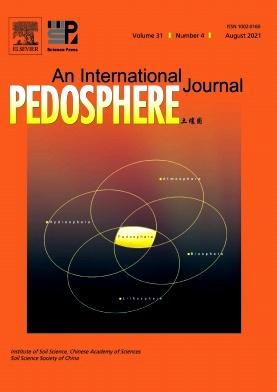土壤退化:对黑土可持续利用的全球性威胁
IF 7.3
2区 农林科学
Q1 SOIL SCIENCE
引用次数: 0
摘要
黑土仅占全球耕地面积的六分之一,但由于其高肥力和巨大的粮食生产潜力,在维持世界粮食安全方面发挥着重要作用。随着农业实践的不断强化和不利的自然因素,黑土正面临着加剧的退化。黑土退化的整体概况和土壤健康改善的潜在机制将是农业可持续性和粮食安全的关键。本文综述了世界四大黑土区土壤退化的现状和驱动因素,并提出了黑土保持的有效措施。中国东北平原是黑土退化的研究热点,尽管其农业开垦历史相对较短,但发表的黑土退化相关研究占41.5%,其次是东欧平原(28.3%)、北美大平原(20.7%)和南美潘帕斯草原(7.9%)。在土壤退化的主要类型中,土壤侵蚀和土壤肥力下降(特别是有机质损失)是最常见的问题,分别占已发表研究的27.6%和39.4%。除了气候和地形的自然影响外,据报道,人类活动对全球黑土的退化也有很大影响。据报道,不可持续的耕作方式和农用化学品的过量使用是加速退化进程和威胁黑土可持续利用的共同因素。全球黑土保护与利用工作的重点应是标准化评价标准,包括实时监测和预防和恢复措施,以实现可持续管理。技术和政策方面的国际合作对于克服这些挑战,从而实现对全球黑土资源的保护、可持续利用和管理至关重要。本文章由计算机程序翻译,如有差异,请以英文原文为准。
Soil degradation: A global threat to sustainable use of black soils
Black soils represent only one-sixth of the global arable land area but play an important role in maintaining world food security due to their high fertility and gigantic potential for food production. With the ongoing intensification of agricultural practices and negative natural factors, black soils are confronting enhanced degradation. The holistic overview of black soil degradation and the underlying mechanisms for soil health improvement will be key for agricultural sustainability and food security. In this review, the current status and driving factors of soil degradation in the four major black soil regions of the world are summarized, and effective measures for black soil conservation are proposed. The Northeast Plain of China is the research hotspot with 41.5% of the published studies related to black soil degradation, despite its relatively short history of agricultural reclamation, followed by the East European Plain (28.3%), the Great Plains of North America (20.7%), and the Pampas of South American (7.9%). Among the main types of soil degradation, soil erosion and soil fertility decline (especially organic matter loss) have been reported as the most common problems, with 27.6% and 39.4% of the published studies, respectively. In addition to the natural influences of climate and topography, human activities have been reported to have great influences on the degradation of black soils globally. Unsustainable farming practices and excess in agrochemical applications are common factors reported to accelerate the degradation process and threaten the sustainable use of black soils. Global efforts for black soil conservation and utilization should focus on standardizing evaluation criteria including real-time monitoring and the measures of prevention and restoration for sustainable management. International cooperation in technology and policy is crucial for overcoming the challenges and thus achieving the protection, sustainable use, and management of global black soil resources.
求助全文
通过发布文献求助,成功后即可免费获取论文全文。
去求助
来源期刊

Pedosphere
环境科学-土壤科学
CiteScore
11.70
自引率
1.80%
发文量
147
审稿时长
5.0 months
期刊介绍:
PEDOSPHERE—a peer-reviewed international journal published bimonthly in English—welcomes submissions from scientists around the world under a broad scope of topics relevant to timely, high quality original research findings, especially up-to-date achievements and advances in the entire field of soil science studies dealing with environmental science, ecology, agriculture, bioscience, geoscience, forestry, etc. It publishes mainly original research articles as well as some reviews, mini reviews, short communications and special issues.
 求助内容:
求助内容: 应助结果提醒方式:
应助结果提醒方式:


